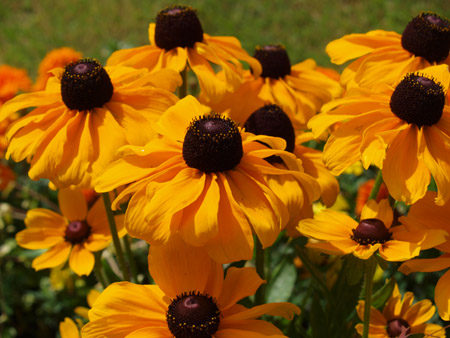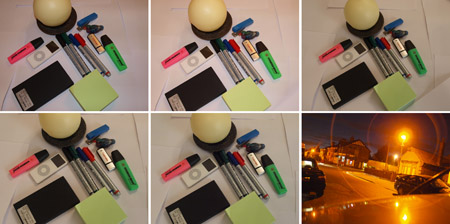Original URL: https://www.theregister.com/2008/08/26/review_olympus_e_420_dslr/
Olympus E-420 digital SLR
It’s dinky and it delivers good pictures
Posted in Personal Tech, 26th August 2008 11:02 GMT
Review Many of us want the slimmest, lightest, most portable camera we can afford. No surprise, then, that Olympus is making a lot of noise about the E-420, claimed to be the “world’s most compact DSLR”.
The E-420 is certainly a tiddler when compared with most other DSLRs on the market, measuring 129.5 x 91 x 53mm and weighing just 380g without the battery. That said, the E-420 is hardly in the same league as a compact camera, especially when you slap a zoom lens on the front - although Olympus does offer a 25mm/f2.8 fixed-focus pancake lens, just 24mm deep.
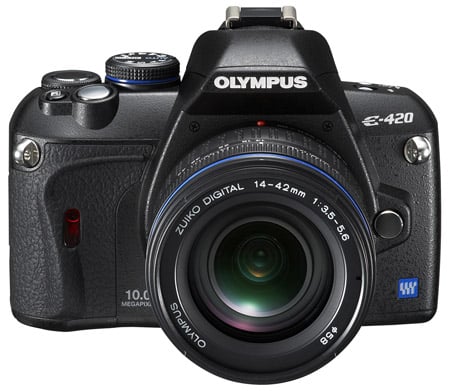
Olympus' E-420: dinky compared to other DSLRs
We used the E-420 with a 14-45mm/f3.5-5.6 lens and that combination would certainly be a tight squeeze in your average handbag. The camera uses the "Four-Thirds" lens interchange system specially developed by Olympus and Kodak for digital photography and supported by others, including Panasonic and Leica, although many other big names, such as Canon and Nikon, do not.
The E-420 has a ten-megapixel 4/3in Live MOS sensor, which measures 17.3 x 13mm. A quick tour of the camera reveals at the top, a flash button - incidentally, the E-420 has wireless flash capability; a multi-function button for remote control, timer and sequential shooting; pop-up flash; hot shoe; and, on the right, a large mode dial (with power on/off lever below), control dial, shutter button and exposure compensation button.
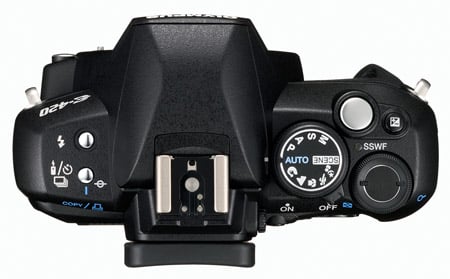
The E-420 has wireless flash capability
The back of the camera is dominated by a 2.7in LCD, to the side of which are a playback, delete, Menu and Info buttons. To the right, you’ll find AE and AF lock button, display mode button and rocker control dial (including a function button) with a central OK button.
Open up the side panel and you’ll find that the E-420 takes both CompactFlash and xD cards in two separate slots. This gives you extra storage capacity and allows you to transfer images between the two cards if you desire. At the bottom is the battery compartment.
Feature-wise, Olympus has stuffed a lot into the compact E-420, including several auto-focus modes which offer both contrast and phase-detection systems - contrast is the default. The camera provides auto, program AE, aperture priority, shutter priority and manual modes, plus 18 scene modes that include, portrait, night, landscape and sport. Live View lets you use the LCD screen as a viewfinder.
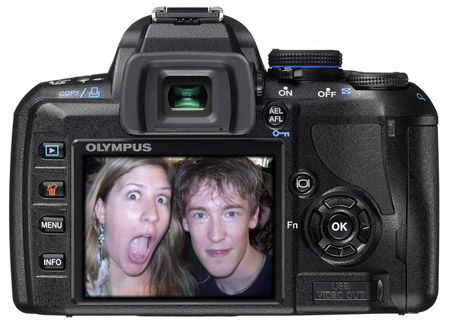
The back of the camera is dominated by a 2.7in LCD screen
There’s a face-detection system, anti-dust sensor and Shadow Adjustment Technology, which is designed to increase detail when your subject is... well... in shadow. The ISO range is 100-1600, the shutter speed varies from 1/4000sec to 60 sec (30 minutes in Bulb mode). In addition, various image tweaking facilities for adjusting the sharpness, contrast and saturation of stills are available too.
You can shoot in both JPEG and RAW file formats (separately or together) with a top resolution of 3648 x 2736 pixels. Colour space options are sRGB and Adobe RGB. Sequential shooting runs at 3.5f/s, and the E-420 will carry on shooting until the card is full, though RAW images are limited to eight frames. There is no movie mode, and image stabilisation is limited to a digital system.
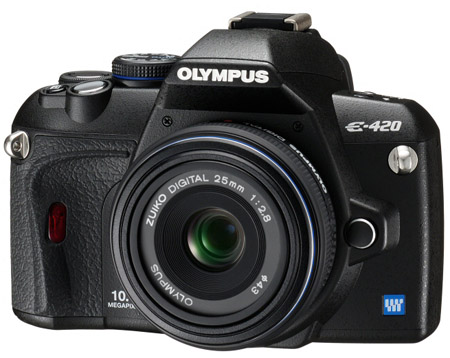
Just a little too small for good handling?
In terms of handling, we found the camera body just a little too small for our large hands. We can see the marketing kudos in claiming to have the world’s smallest DSLR, but in practice it’s not such a great idea. If someone really wants a compact camera, they’re likely to opt for a compact digital.
That said, the large LCD screen is superb and we also liked the E-420’s grandly titled "super control panel". Press the OK button and you're presented with a cornucopia of shooting information, including ISO, white balance, flash mode, shooting mode, image size, metering, picture mode, face detection details and image adjustment options.
Sample shots
Click for full-size images
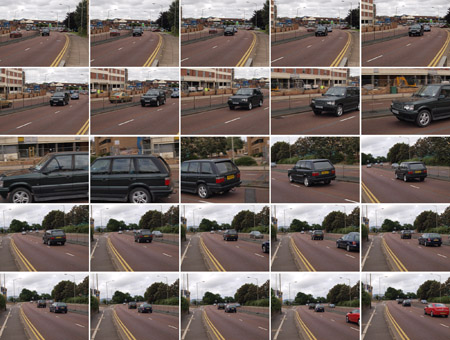
The E-420’s continuous shooting mode shoots at 3.5f/s, and if you’re taking JPEG images, it'll continue shooting until the card is full

You can adjust a number of parameters with the E-420, including the contrast: left to right, normal, low and high
Sample shots
Click for full-size images
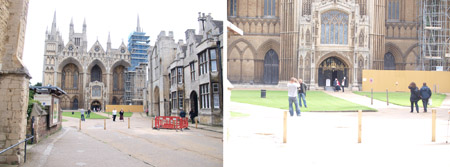
Our camera came with a 3.2x lens that allowed us to see the three people standing in front of the cathedral at the telephoto setting
Just scroll to the function you want, press OK and then make the adjustment. In other words, it's very easy to change a large number of parameters without wading through a series of fiddly menus. That said, the menu system isn’t bad. You can use the Info button for the Live Shot preview function, which presents you with four thumbnails of the same scene using different white balance and exposure settings.
Select the one you want, and the the E-420 does the rest. In other words, this is a very friendly camera to use and is aimed more at the beginner to DSLR photography than the seasoned pro. In terms of performance, the E-420 switches on quickly (about one second) and shutter lag isn't a problem. We struggled to see what difference the Four-Thirds system made to image quality, and the E-420 is no better or worse than other camera’s we’ve tested without the system.
Colour reproduction was subtle and detail was generally sharp. This is a tweaker’s camera and there are certainly plenty of options for subtly (or not so subtly) adjusting parameters such as colour saturation, contrast and exposure. You might want to use the latter a fair bit because there are times when the auto exposure system presented us with disappointing results.
Verdict
The focus systems worked well, although close-up shooting in the macro mode was a struggle at times, with the E-420 taking quite a while to lock onto the subject. In fact, we weren’t terribly convinced by many of the pre-set modes on offer. Night mode, for instance, produced disappointing results - you’d be better off adjusting the ISO setting than leaving things to the E-420. On the plus side, the continuous shooting mode was fast, responsive and kept fast-moving subjects in focus. And despite the E-420’s small image sensor, noise didn’t start making a noticeable impact until ISO 400, but even then, it was at an acceptable level.
